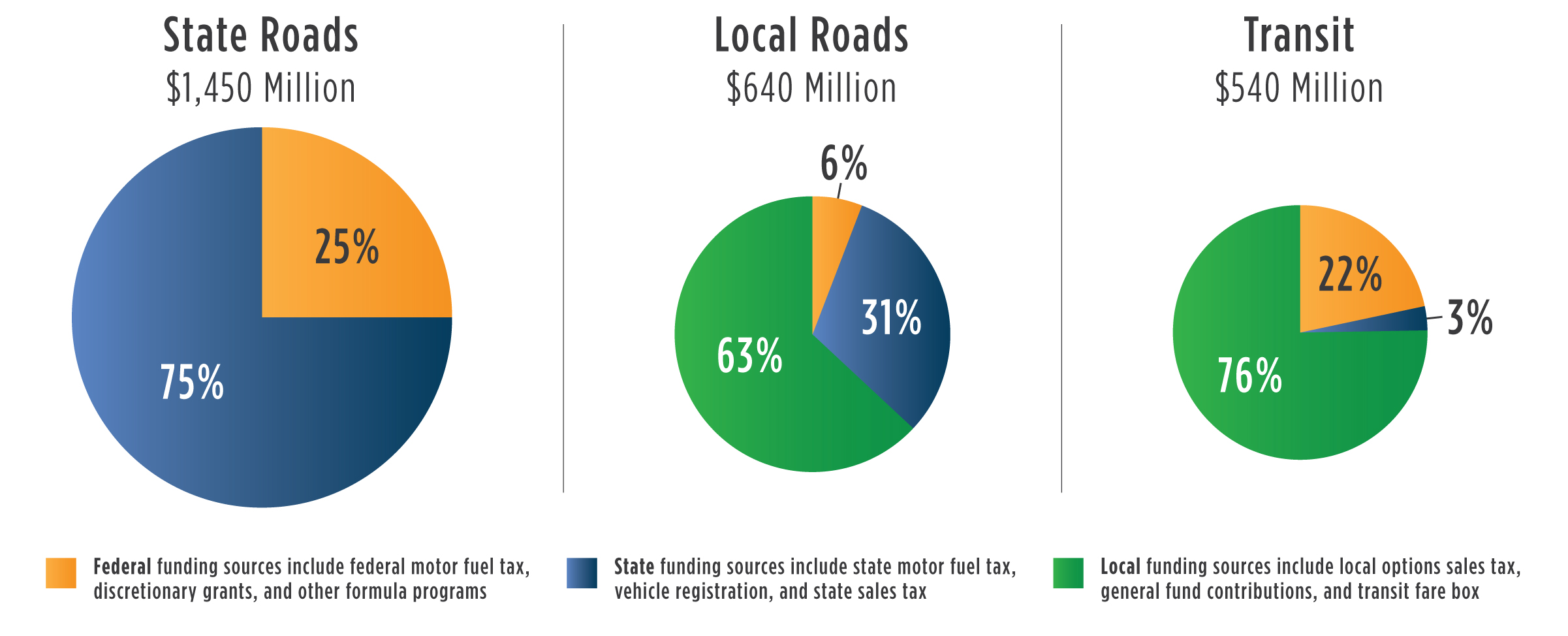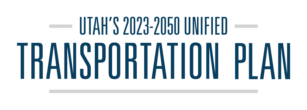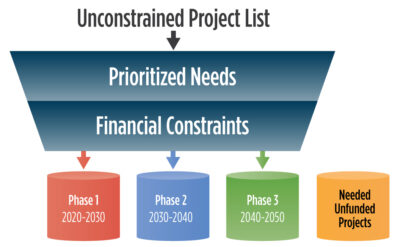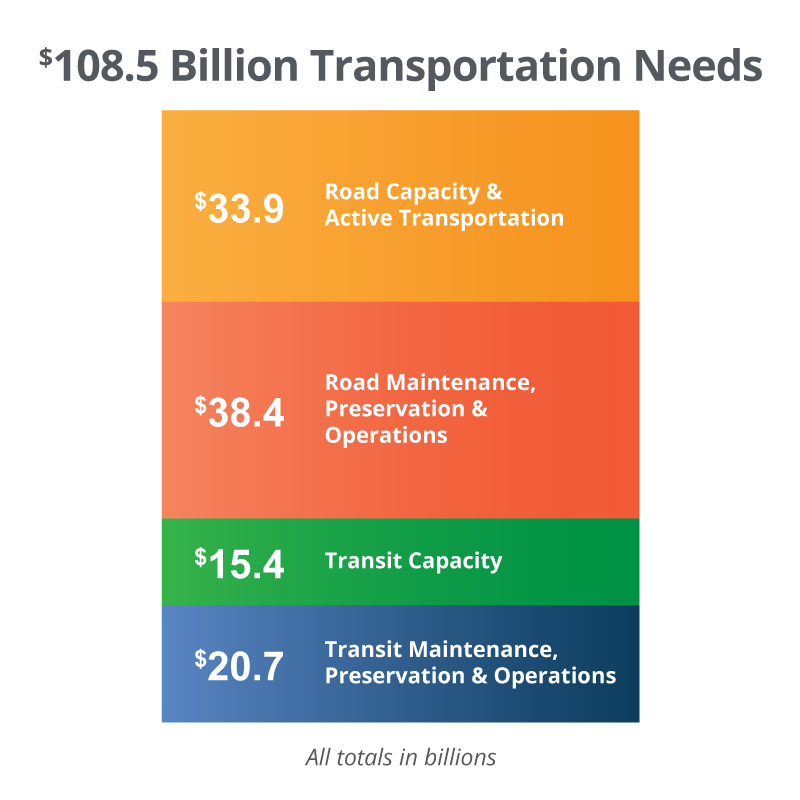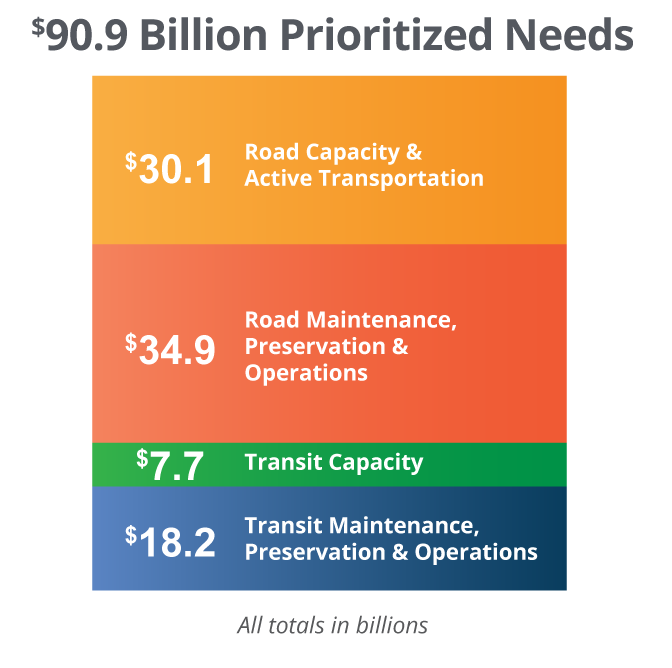Funding our Transportation Future
No one can predict with certainty how much funding will be available over the next few decades to address Utah’s priority transportation needs. However, Utah’s transportation agencies have worked together to develop a robust financial model based on sound technical analysis for current and future projected revenue that can reasonably be assumed to pay for these transportation needs.
Utah’s transportation agencies have together projected that between 2019 and 2050, the total transportation need in Utah is estimated at $108.5 billion in today’s dollars. This includes funding needed to operate our current transportation system, and to preserve and maintain the infrastructure in good condition. It also includes the funding needed to meet growing travel demands by increasing roadway capacity by building new roads, and widening and making operational enhancements to existing roads; increasing transit capacity by building new transit lines, upgrading existing lines and providing more frequent rail and bus service; and increasing options to bike or walk by constructing new bikeways and improving existing trails and walkways.


The Unified Plan Financial Model assumes that current revenue sources for transportation will remain in place, or be replaced by equivalent sources. For example, the Unified Plan assumes that the revenues coming from transportation user fees such as the current motor fuel tax — or a replacement such as a road usage charge — will continue and grow gradually over time. The Unified Plan makes projections about the growth of those revenue sources, based on historical trends and economic analysis. The Unified Plan also makes projections about revenues that would be generated from new or increasing existing sources, such as additional local option transportation sales taxes. These projections are based on reasonable and prudent assumptions reflecting historical trends. Importantly the Unified Plan does not assume that revenues will be available to meet all transportation needs.
The State’s transportation partners develop a financially constrained Unified Plan to be fiscally prudent and to reflect the inability of existing and new revenues to meet all transportation needs. The prioritization framework begins with an unconstrained project list of the State’s transportation needs. Needs are then prioritized based on agency goals and phased based on when existing and new revenue is reasonably assumed to be available. The Unified Plan has three phases: Phase 1 (2019-2030), Phase 2 (2031-2040), and Phase 3 (2041-2050). Projects that cannot be reasonably assumed to be funded by 2050 are considered ‘unfunded’.
For planning purposes, Utah’s Unified Transportation Plan assumes that all the existing revenue sources will generate $74.4B (in today’s dollars) between 2019 and 2050. Existing revenues include the following sources, or options that would generate equivalent new revenues:
- State motor fuel and diesel taxes
- Vehicle registration fees
- Local option transportation sales taxes
- Federal funding
- State auto-related sales taxes
- General funds
For planning purposes, Utah’s Unified Transportation Plan assumes that all new revenue sources will generate $16.5B (in today’s dollars) between 2019 and 2050. Assumed new revenues sources include the following sources, or options that would generate equivalent new revenues:
- Statewide motor fuel and diesel tax increases
- Statewide vehicle registration fee increase
- Local community vehicle registration fee increase
- Local community sales tax increase
- Private-sector funding building local roads
The specific funding mechanisms will depend on decisions by state and local elected officials. The Unified Plan — in an attempt to be prudently conservative in its assumptions — does not assume significant private contributions to transportation (other than developer-paid impact fees), nor does it assume the use of value capture techniques, such as Transportation Reinvestment Zones or tax increment financing. However, these are potential additional sources to generate revenue for infrastructure investment, among others.
Needs and Revenues for State and Local Roads and Transit
Through 2050
Most funding sources that are available for transportation are prescribed by federal or state law or constitution, to be used for a particular category of investment, such as state roads, local roads, or transit. The Unified Plan identifies needs in each of these categories, and revenues are estimated and/or assumed to be available in these categories. The actual availability of funding will depend on a variety of factors, including tax policy and evolving economic conditions. Active Transportation needs are included within the State and Local Road numbers.
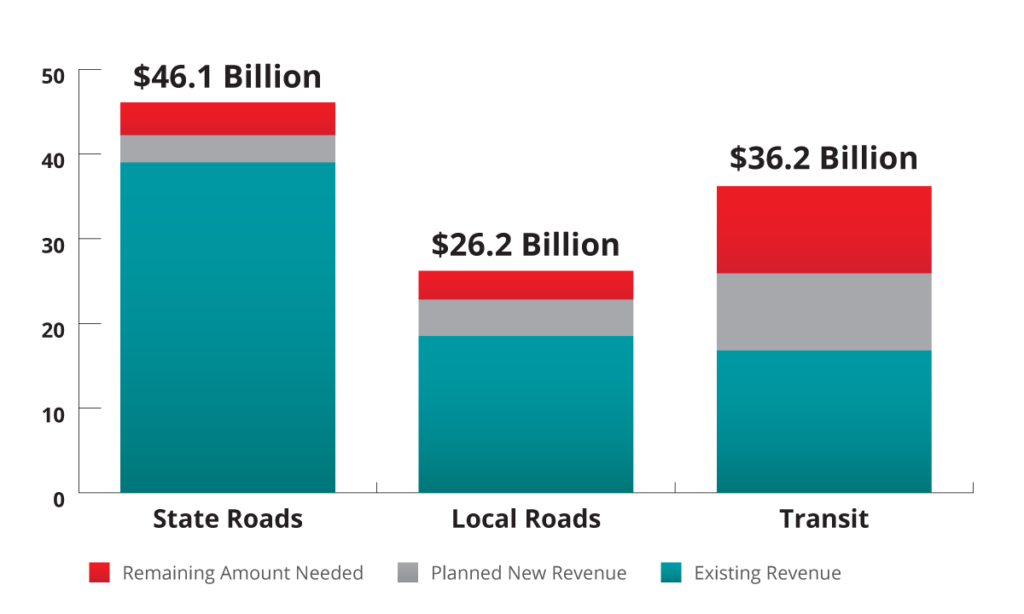
How Today's Transportation Is Funded
Our state roads, local roads, and transit systems are funded to various degrees by federal, state, and local revenue sources. While the information presented above is inclusive over the 31-year life of the plan, the charts below illustrate state-wide funding sources and spending for the maintenance, operation, and construction of our transportation systems for an average year. Active Transportation needs are included within the State and Local Road numbers.
